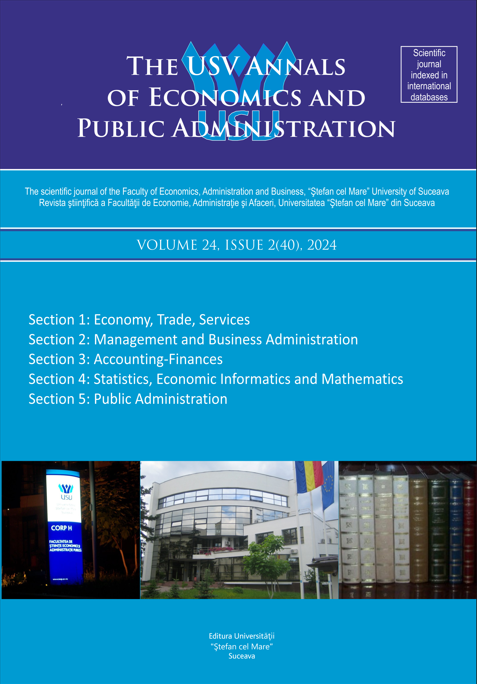Risk Profiling of the Tertiary Sector of Romanian National Economy by use of Analytical Accounting Procedures and Statistical Investigations
DOI:
https://doi.org/10.4316/aepa.2024.24.2(40).180-190Abstract
This article investigates by use of statistical tools and methods and analytical accounting procedures the exposure to fiscal-accounting and financial risk, through analysis of sectorial and temporal risk profiles for 2018 – 2022 for economic entities from eight fields of economic activity in the service sector of the Romanian economy, that is: Residential and non-residential building construction work, Motor vehicle maintenance and repair, Hotels and other similar accommodation facilities, Real estate agencies, General healthcare activities, Accounting and financial auditing activities, Employment agency activities and Other cleaning activities. The analysed risk markers consist of Total debt ratio, Personal expense ratio, Solvency ratio, Financial solvency ratio, Asset solvency ratio, Return on assets, Return on equity, Commercial return and Debt turnover rate.
The general risk profile revealed that the analysed economic entities register a very high degree of indebtedness, which, correlated with the Debt Turnover indicator configures the main risk exposure, where economic entities use excessive indebtedness. The most vulnerable business sector from this perspective is Construction works of residential and non-residential buildings, as the main sources of financing come from borrowed capital, directly influencing the ability of economic operators to bear operating costs and fulfil their commercial, financial and fiscal commitments.
Risk exposure from a temporal perspective, revealed the years 2018, 2019 and 2020 as being the most vulnerable to risk, when the annual average of the indicators reaches values considerably above or below the general average. A possible explanation for the manifestation of the risk at the level of 2019-2020 could be represented by the emergence of the health crisis in 2019, with strong effects on the tertiary sector of the economy, especially on the activity volume, profitability and solvency indicators.

